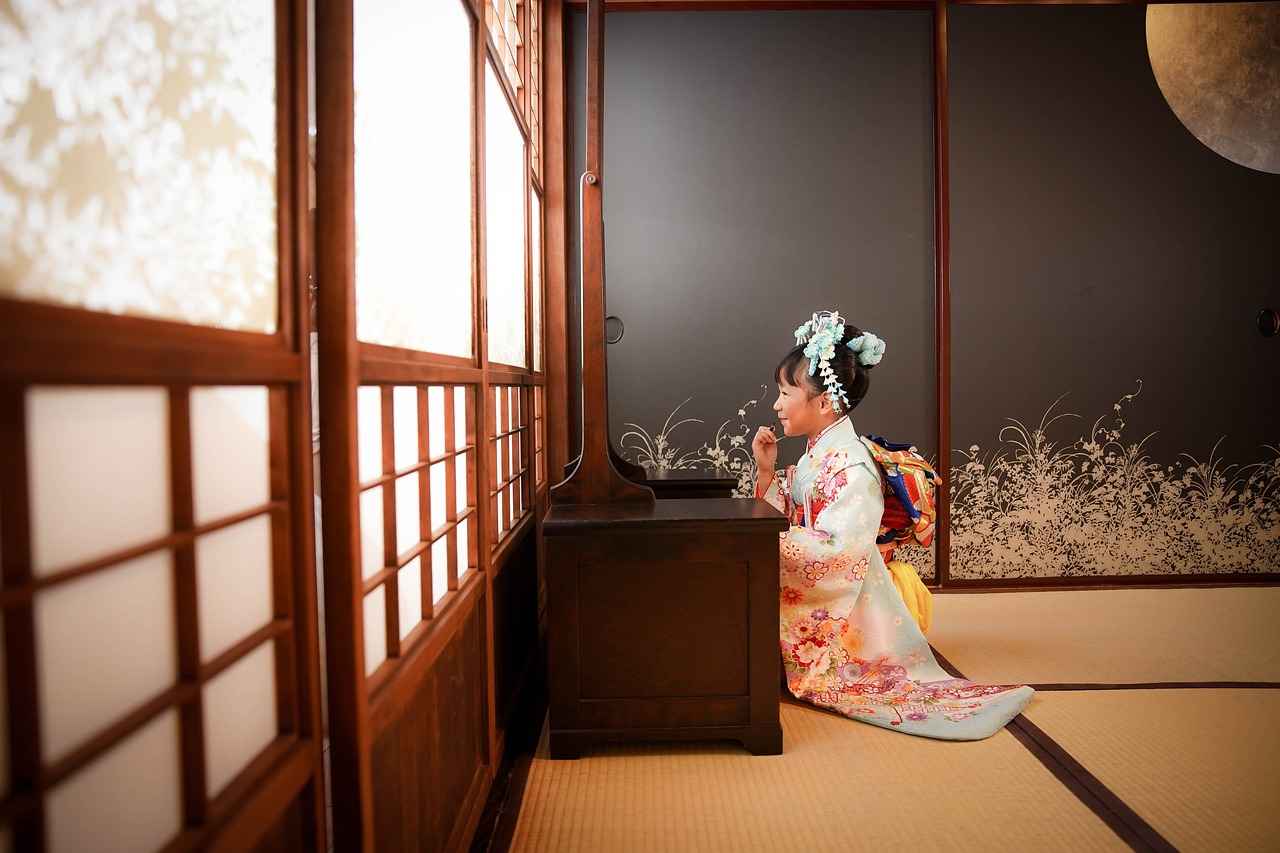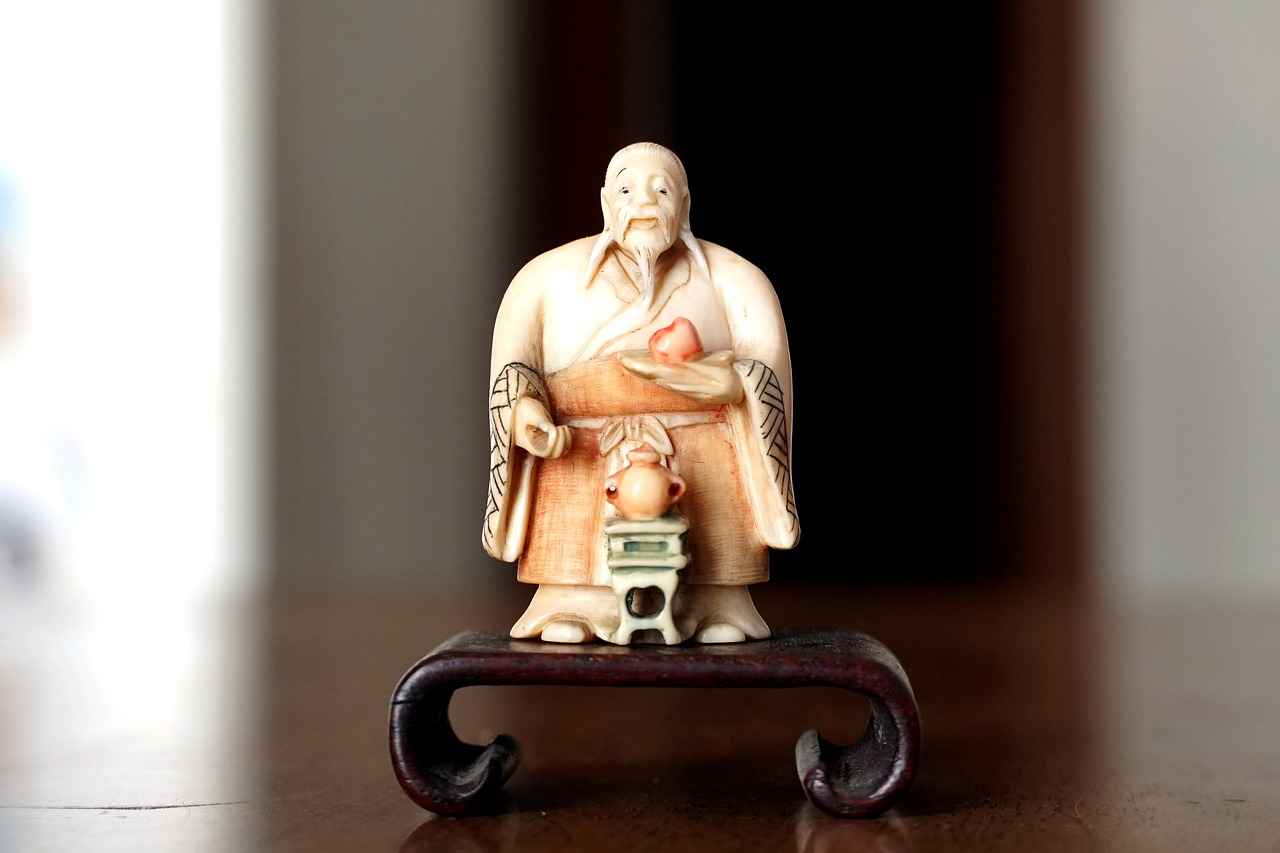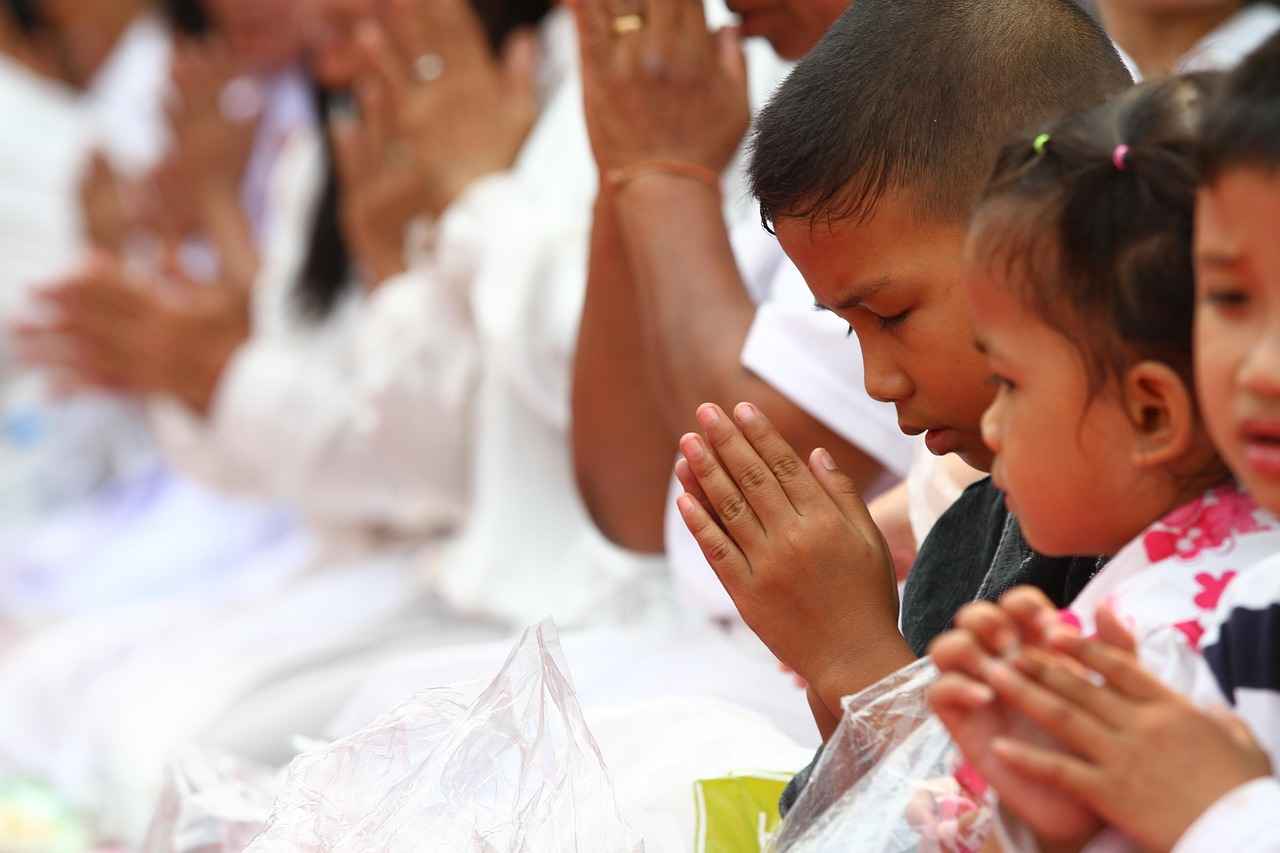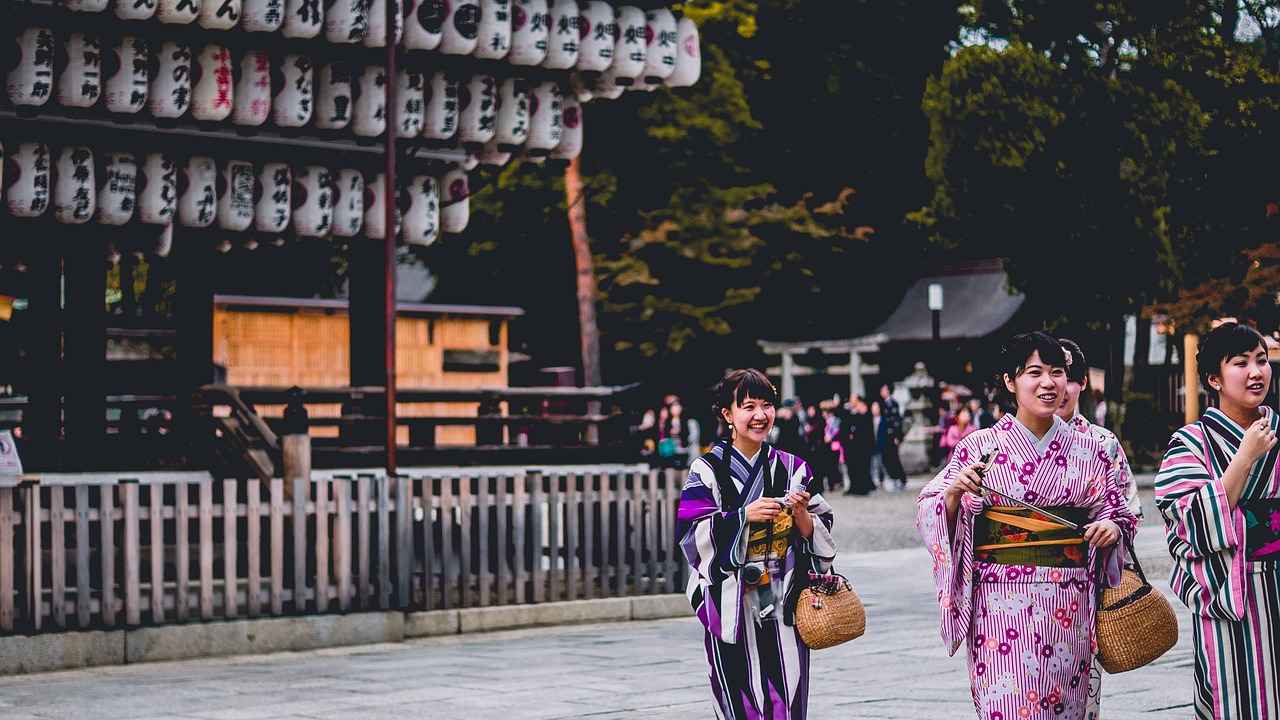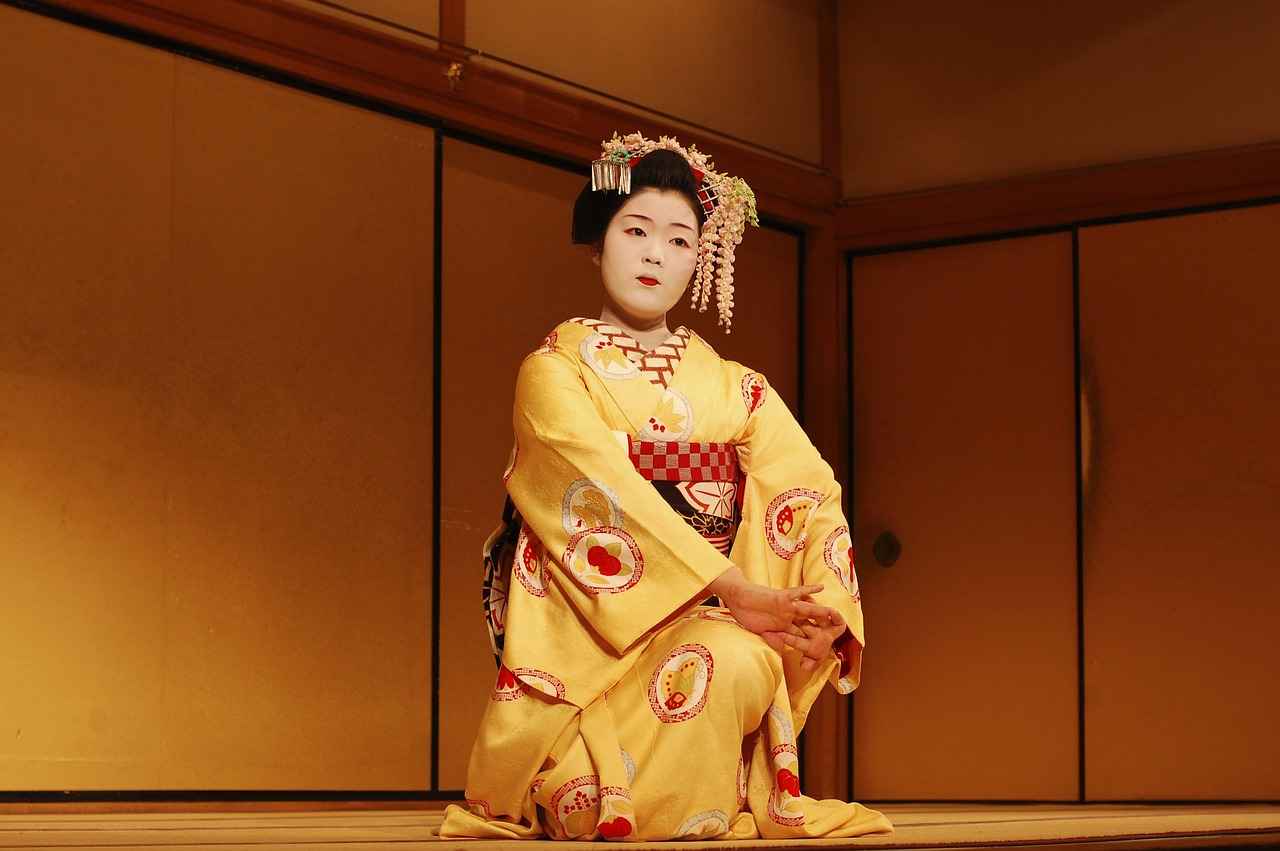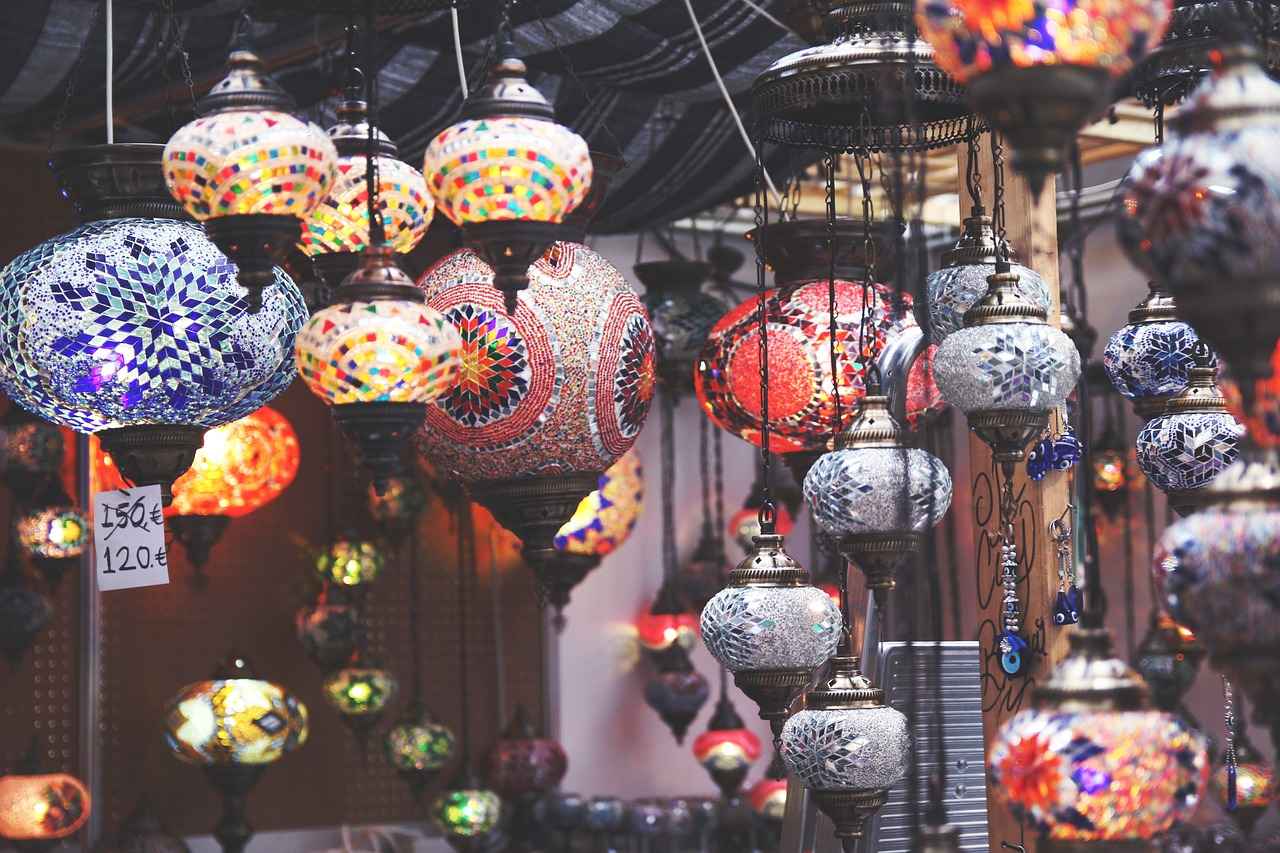This article delves into the rich history, cultural significance, and various styles of the kimono, a traditional Japanese garment. As one of the most iconic symbols of Japan, the kimono has evolved over centuries and continues to influence fashion both within and beyond its borders.
The History of the Kimono
The kimono’s history spans over a thousand years, originating from simple clothing to becoming a profound symbol of Japanese culture and identity. Initially influenced by Chinese garments, the kimono gradually developed its unique style, particularly during the Heian period (794-1185), when it became a staple of Japanese aristocracy.
Types of Kimono
Kimonos come in various styles, each designed for specific occasions. Understanding these types enhances appreciation for this intricate garment and its role in Japanese society.
- Furisode: A long-sleeved kimono typically worn by young unmarried women, symbolizing youth and elegance.
- Yukata: A casual summer kimono made of lightweight cotton, ideal for festivals.
- Tomesode: A formal kimono worn by married women, often featuring elegant designs.
Kimono Fabrics and Materials
Kimonos are crafted from various materials including silk, cotton, and synthetic fabrics. Each fabric type offers unique qualities that impact the garment’s appearance and suitability for different occasions.
| Fabric Type | Characteristics | Occasions |
|---|---|---|
| Silk | Luxurious, intricate designs | Formal events |
| Cotton | Casual, breathable | Everyday wear, summer festivals |
The Art of Kimono Wearing
Wearing a kimono involves a detailed process, including specific techniques for dressing and accessorizing. Mastering this art can significantly enhance the overall aesthetic and cultural appreciation.
Modern Influences on Kimono Fashion
Today, the kimono continues to inspire modern fashion, blending traditional elements with contemporary styles. Designers worldwide are increasingly incorporating kimono aesthetics into their collections, showcasing the garment’s versatility.
Conclusion: The Enduring Legacy of the Kimono
The kimono remains a powerful symbol of Japanese culture, embodying both tradition and modernity. Its rich history and evolving styles continue to captivate and inspire people around the world, ensuring its legacy endures for generations to come.

The History of the Kimono
The kimono, a traditional garment of Japan, has a rich and intricate history that spans over a millennium. Initially, it began as a simple piece of clothing, primarily for practical purposes, but over the centuries, it has transformed into a symbol of Japanese culture and identity. This evolution reflects the changes in Japanese society, aesthetics, and values.
During the Heian period (794-1185), the kimono became more elaborate, showcasing the artistry of textiles and dyeing techniques. The garment was often made from silk, adorned with intricate patterns and colors that indicated the wearer’s status and taste. As the samurai class emerged, the kimono also evolved to reflect the values of honor and discipline, incorporating elements that distinguished warriors from commoners.
In the Edo period (1603-1868), the kimono reached new heights of popularity. It became a staple of daily life, with distinct styles emerging for different occasions, seasons, and social statuses. The furisode, for instance, became a symbol of youth and elegance, typically worn by unmarried women during special events.
As Japan entered the modern era, Western influences began to seep into traditional attire. Despite this, the kimono has retained its significance and continues to be worn during important ceremonies, such as weddings and tea ceremonies. The garment has also adapted to contemporary fashion, inspiring designers worldwide.
Today, the kimono stands as a testament to Japan’s cultural heritage, embodying a blend of history and modernity. It remains a cherished symbol, representing the beauty of tradition while evolving with the times.
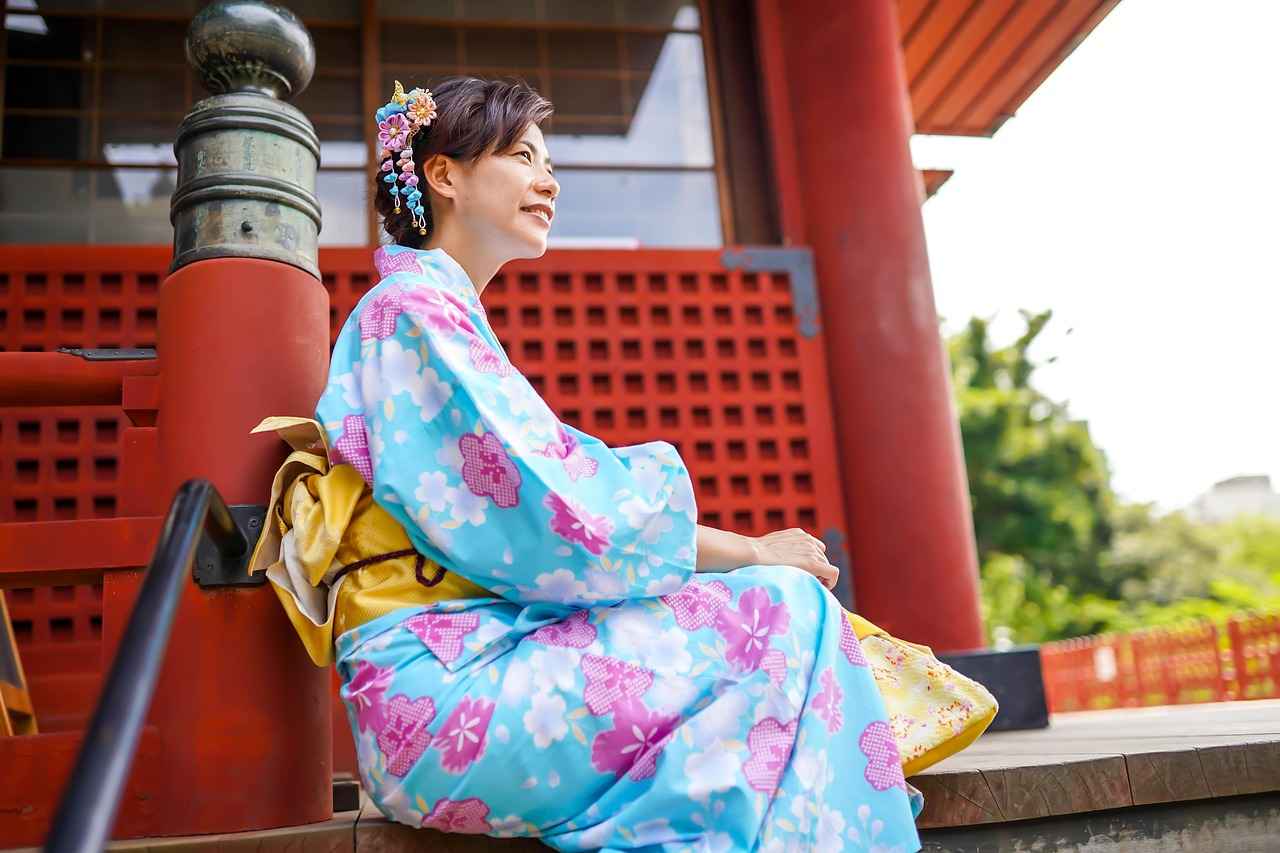
Types of Kimono
Kimonos are not just garments; they represent a significant part of Japanese culture and heritage. With a rich history spanning centuries, these traditional outfits come in various styles, each tailored for specific occasions. Understanding the different types of kimonos can deepen one’s appreciation for their intricate designs and cultural importance.
In Japan, kimonos are categorized based on several factors, including sleeve length, fabric, and the occasion for which they are worn. Here are some of the most notable types:
- Furisode: This style features long sleeves and is typically worn by young, unmarried women. The furisode is a symbol of youth and is often seen at significant events like weddings and coming-of-age ceremonies.
- Yukata: A casual summer kimono made from lightweight cotton, the yukata is perfect for festivals and outdoor events. Its vibrant colors and comfortable fit make it a popular choice during warmer months.
- Tomesode: This type is worn by married women and features shorter sleeves. Tomesode often comes in subdued colors and is usually adorned with elegant patterns, making it suitable for formal occasions.
- Hōmongi: A versatile kimono that can be worn by both married and unmarried women, the hōmongi is often characterized by its flowing patterns that continue across seams. It is commonly worn at celebrations and formal events.
- Shitagi: This is an undergarment worn beneath the kimono, typically made of cotton or silk. It serves both a practical and aesthetic purpose, ensuring comfort and enhancing the overall look of the kimono.
Each type of kimono carries its own cultural significance and is often associated with specific life events or celebrations. For instance, the furisode is a popular choice for young women celebrating their coming-of-age, while the tomesode is reserved for married women at formal gatherings. Understanding these distinctions not only enhances the appreciation of the kimono but also highlights its role in Japanese traditions and societal norms.
In conclusion, the diverse styles of kimonos reflect the rich tapestry of Japanese culture. Whether it’s the youthful exuberance of the furisode or the elegant simplicity of the tomesode, each kimono tells a story and embodies the artistry and heritage of Japan.
Furisode
The is a traditional long-sleeved kimono that holds a special place in Japanese culture, particularly among young unmarried women. This exquisite garment is not just a piece of clothing; it is a symbol of youth, elegance, and cultural heritage. Often adorned with vibrant colors and intricate designs, the furisode is typically worn during significant life events such as weddings, coming-of-age ceremonies, and other formal celebrations.
Historically, the furisode has been a marker of a woman’s marital status, with its long sleeves representing the freedom and vitality of youth. The style of the furisode has evolved over the years, yet it remains a popular choice for young women during important milestones. The garment is often paired with a beautifully designed obi (belt) that complements its aesthetic, enhancing the overall look.
| Occasions for Wearing Furisode | Significance |
|---|---|
| Coming-of-Age Ceremonies | Celebrating the transition to adulthood |
| Weddings | Symbolizing beauty and tradition |
| Shichi-Go-San | A festival celebrating children |
The designs of furisode are often seasonal, reflecting nature’s beauty through motifs such as flowers, birds, and other elements. Each pattern tells a story, often reflecting the personality and social status of the wearer. This attention to detail makes the furisode not only a garment but also a work of art.
In modern times, the furisode continues to be celebrated in various cultural events and has even influenced contemporary fashion. Young women often rent furisode for special occasions, allowing them to participate in this beautiful tradition while embracing their cultural roots.
In conclusion, the furisode is much more than a traditional clothing item; it is a cherished symbol of Japanese culture that embodies the elegance, beauty, and spirit of youth. Its enduring popularity showcases the garment’s significance in both historical and modern contexts, making it a beloved choice for celebrations.
Design and Patterns
The furisode, a traditional long-sleeved kimono, is renowned not only for its elegance but also for its stunning designs and vibrant colors. Each furisode is a unique expression of the wearer’s personality, often reflecting their social status and individual style. The intricate patterns found on these garments are not merely decorative; they carry deep cultural significance and can symbolize various themes, seasons, or personal milestones.
These designs can range from floral motifs and geometric shapes to mythological symbols, each telling a story or conveying a message. For instance, cherry blossoms might symbolize the fleeting nature of life, while cranes represent longevity and good fortune. As such, the choice of design can be a reflection of the wearer’s aspirations or current life circumstances.
Furisode designs are often seasonal, aligning with the changing seasons in Japan. Spring designs may feature blossoms and pastel colors, while autumn patterns could incorporate rich hues of red and gold, reminiscent of falling leaves. This seasonal alignment not only enhances the beauty of the kimono but also connects the wearer to the natural world and its cycles.
Moreover, thematic designs are also prevalent, often celebrating significant cultural events or festivals. For example, a furisode worn during the Shichi-Go-San festival may showcase motifs that honor childhood and growth. Such designs serve to enhance the festive atmosphere and connect the wearer to their cultural heritage.
In summary, the design and patterns of furisode kimonos are rich with meaning and significance. They are a vibrant expression of tradition, individuality, and the beauty of Japanese culture.
Occasions for Wearing Furisode
The furisode is a traditional Japanese kimono characterized by its long sleeves and vibrant designs, symbolizing youth and elegance. This garment holds a special place in Japanese culture, particularly for young unmarried women. The occasions for wearing a furisode are deeply rooted in cultural traditions and significant life events.
One of the most notable events for wearing a furisode is Shichi-Go-San, a festival celebrated in November that honors the growth of children aged three, five, and seven. During this festival, girls typically don a furisode, showcasing their transition into womanhood. This event is not just a celebration of age but also a moment for families to express their hopes and dreams for their children.
Another important occasion is the Coming of Age Day (Seijin no Hi), celebrated on the second Monday of January. This day marks the transition into adulthood for those who turn 20 years old during the year. Young women often wear furisode to signify their newfound status and responsibilities in society. The vibrant colors and intricate patterns of the furisode reflect the joy and excitement of this significant milestone.
Furisode are also worn at weddings, where they symbolize happiness and good fortune. The bride may choose to wear a furisode during the ceremony or reception, further enhancing the celebratory atmosphere. Additionally, they are appropriate for formal events such as graduations and formal tea ceremonies, where tradition and elegance are paramount.
In summary, the furisode is more than just a beautiful garment; it represents important cultural rituals and milestones in a young woman’s life. Its presence at significant events underscores its importance in Japanese society, making it a cherished piece of heritage.
Yukata
The yukata is a traditional Japanese garment that embodies the essence of summer festivities. Made from lightweight cotton, it is designed for comfort and breathability, making it an ideal choice for warm weather. The vibrant colors and intricate patterns of the yukata not only reflect the beauty of Japanese culture but also add a festive flair to any outdoor event.
Historically, the yukata was worn by the Japanese during summer festivals and fireworks displays, providing a casual yet elegant alternative to the more formal kimono. Today, it remains a popular attire during various summer events, such as hanabi (fireworks festivals) and matsuri (traditional festivals). The yukata is often paired with geta (traditional wooden sandals) and a simple obi (belt), completing the look with a touch of authenticity.
One of the most appealing aspects of the yukata is its versatility. Available in a wide range of colors and designs, it allows individuals to express their personal style while embracing cultural heritage. From bold floral patterns to minimalist designs, there is a yukata to suit every taste. Moreover, the ease of wearing a yukata makes it accessible for people of all ages, from children to adults.
As summer approaches, many people look forward to donning their yukata, participating in traditional ceremonies, and enjoying the vibrant atmosphere of Japanese festivals. The yukata not only serves as a beautiful garment but also as a reminder of the rich cultural traditions that continue to thrive in modern Japan.
In conclusion, the yukata is more than just a casual summer kimono; it is a symbol of Japan’s cultural heritage, a celebration of summer, and a perfect way to experience the joy of outdoor festivities. Whether you are attending a festival or enjoying a summer evening, wearing a yukata is sure to enhance the experience.

Kimono Fabrics and Materials
Kimonos are not just garments; they are a reflection of Japan’s rich cultural heritage and artistry. The fabrics and materials used in making kimonos play a crucial role in defining their look, feel, and suitability for various occasions. Understanding these materials can enhance one’s appreciation of this traditional attire.
Kimonos are made from a variety of fabrics, each offering unique characteristics that influence the overall experience of wearing them. The most common materials include:
- Silk: Renowned for its luxurious texture and sheen, silk kimonos are often adorned with intricate designs. They are typically reserved for formal occasions such as weddings, tea ceremonies, and other significant events. The elegance of silk adds a layer of sophistication, making it a favorite among collectors and enthusiasts.
- Cotton: More casual than silk, cotton kimonos, including yukatas, are perfect for summer festivals and everyday wear. They are lightweight, breathable, and easy to care for, making them a practical choice for those who enjoy the kimono style without the formality of silk.
- Synthetic Materials: With advancements in textile technology, synthetic fabrics have become popular for kimonos. These materials are often more affordable and durable, making them accessible to a wider audience. They can mimic the appearance of silk while offering enhanced functionality, such as moisture-wicking properties.
Each fabric type not only affects the visual appeal of the kimono but also its comfort and durability. For example, while silk offers a stunning aesthetic, it requires more care and maintenance compared to cotton or synthetic options. Understanding these differences is essential for anyone looking to invest in or wear a kimono.
In conclusion, the choice of fabric is a significant factor in the kimono’s charm and functionality. Whether one opts for the luxurious feel of silk, the casual comfort of cotton, or the practicality of synthetic materials, each option tells a story of tradition and innovation.
Silk Kimonos
are not just garments; they are artistic expressions that embody centuries of tradition and craftsmanship. Renowned for their luxurious texture and intricate designs, these kimonos are a testament to the skill of Japanese artisans who have perfected the art of silk weaving and dyeing over generations.
Typically made from high-quality silk fabric, these kimonos often feature elaborate patterns that tell a story or symbolize various aspects of Japanese culture, such as nature, seasons, or mythology. The craftsmanship is evident in the fine details and vibrant colors that adorn each piece, making them not only clothing but also wearable art.
Silk kimonos are traditionally reserved for formal events and special occasions, including weddings, tea ceremonies, and festivals. Their elegance and sophistication make them a popular choice for significant life events, where the wearer wishes to convey a sense of tradition and respect for cultural heritage.
Moreover, the cultural significance of silk kimonos extends beyond their aesthetic appeal. They serve as a bridge between generations, often passed down as family heirlooms. Wearing a silk kimono can evoke a sense of pride and connection to one’s roots, as each garment carries with it the stories and memories of those who wore it before.
In modern times, while the silk kimono remains a staple of traditional dress, it has also found a place in contemporary fashion. Designers are increasingly incorporating elements of the kimono into their collections, blending traditional motifs with modern cuts and styles, thus ensuring that this iconic garment remains relevant in today’s fashion landscape.
In conclusion, silk kimonos are a celebration of Japanese culture and artistry. Their luxurious feel and stunning designs make them a cherished choice for formal occasions, while their rich history and evolving presence in fashion continue to captivate admirers around the world.
Cotton Kimonos
are a delightful and versatile addition to the world of traditional Japanese clothing. Unlike their silk counterparts, cotton kimonos are designed with comfort and casual wear in mind, making them the perfect choice for various occasions, especially during the hot summer months.
These garments, often associated with yukatas, are made from lightweight and breathable cotton fabric, which allows for excellent airflow, ensuring that wearers stay cool even in warm weather. This quality makes cotton kimonos ideal for summer festivals, casual outings, or even lounging at home. Their easy-care nature means they can be machine washed and require minimal maintenance compared to more delicate fabrics.
| Feature | Cotton Kimonos | Silk Kimonos |
|---|---|---|
| Comfort | Highly breathable and lightweight | Luxurious but can be heavy |
| Care | Machine washable | Dry clean recommended |
| Price | Generally less expensive | Typically high-end pricing |
Moreover, cotton kimonos often come in a variety of colors and patterns, allowing individuals to express their personal style while embracing traditional Japanese aesthetics. From floral designs to geometric shapes, there’s a cotton kimono to suit every taste.
In addition to their aesthetic appeal, cotton kimonos are also a symbol of cultural heritage. They represent a blend of tradition and modernity, making them a popular choice among both locals and tourists. As fashion evolves, the cotton kimono continues to hold its place as a beloved garment, cherished for its practicality and charm.
In conclusion, cotton kimonos are not just a practical choice for everyday wear; they embody a rich cultural tradition that resonates with people of all ages. Their affordability, ease of care, and stylish designs make them an essential part of any wardrobe, especially during the vibrant summer season.

The Art of Kimono Wearing
is a captivating aspect of Japanese culture that requires both skill and appreciation. Wearing a kimono is not merely about putting on a garment; it involves a detailed process that reflects the rich traditions of Japan. This article delves into the intricacies of kimono wearing, highlighting the techniques and accessories that enhance the overall aesthetic and cultural significance.
To begin with, the process of dressing in a kimono can be quite elaborate. It typically involves several layers, each serving a purpose. The base layer is often a nagajuban, a type of undergarment that protects the kimono from sweat and oils. Following this, the main kimono is donned, ensuring that it is aligned properly to reflect the traditional style. The left side of the kimono should always overlap the right side, as the opposite is reserved for dressing the deceased.
Next, the obi, or belt, is tied around the waist. This accessory is not only functional but also a key element of the kimono’s aesthetic. There are various styles of obi, including the fukuro obi for formal occasions and the haneri for more casual settings. The way the obi is tied and styled can greatly influence the overall look of the ensemble.
Accessorizing is another essential part of the kimono-wearing process. Items such as obijime (cords) and haneri (collars) add layers of elegance and tradition. Each accessory has its own significance and can be chosen based on the occasion or the wearer’s personal style.
Finally, mastering the art of kimono wearing is not just about the physical act; it also encompasses understanding the cultural significance behind each element. This knowledge enhances the appreciation of the kimono and its role in Japanese society. Whether worn for celebrations, festivals, or everyday life, the kimono remains a powerful symbol of heritage and identity.
In conclusion, the art of wearing a kimono is a blend of technique, tradition, and personal expression. By embracing the detailed process of dressing and accessorizing, one can truly honor the cultural legacy that the kimono represents.
Kimono Accessories
are essential components that elevate the traditional Japanese garment, adding depth and character to the overall look. Each accessory serves a unique purpose, enhancing not only the aesthetic appeal but also the cultural significance of the kimono.
The obi, or belt, is perhaps the most recognizable accessory. It is typically wide and intricately designed, serving to secure the kimono around the waist. The style and color of the obi can vary significantly, often reflecting the occasion or the wearer’s personal style. For instance, formal events may call for a more elaborate obi, while casual outings might favor simpler designs.
Another important accessory is the obijime, a decorative cord that is tied around the obi. This accessory is not only functional, keeping the obi in place, but it also adds a touch of elegance. Obijime come in various colors and materials, allowing wearers to express their individuality. They can be adorned with intricate patterns or embellishments, further enhancing the kimono’s visual appeal.
The haneri, or collar, is another vital component that frames the face and adds sophistication to the ensemble. Often made from contrasting fabrics, the haneri can be a subtle or bold statement piece, depending on the design. It is customary to change the haneri for different occasions, adding versatility to the kimono outfit.
Additionally, kanzashi (hair ornaments) and geta (traditional wooden sandals) are crucial accessories that complete the kimono look. Kanzashi can be simple or ornate, often reflecting seasonal themes or personal sentiments. Geta, on the other hand, elevate the kimono’s silhouette while providing comfort and support during wear.
In conclusion, the right accessories can transform a simple kimono into a stunning representation of Japanese culture and artistry. Each piece, from the obi to the haneri, plays an integral role in showcasing the rich traditions and aesthetics of this beloved garment.
How to Properly Wear a Kimono
Wearing a kimono is an art that requires understanding not only the garment itself but also the cultural significance and the etiquette associated with it. This traditional Japanese attire is not just clothing; it represents a rich heritage and a deep sense of identity. Here, we will delve into the essential techniques and practices to ensure you wear a kimono correctly, enhancing both your appearance and respect for this beautiful garment.
- Choosing the Right Kimono: Select a kimono that suits the occasion. For formal events, opt for a furisode or a kimono made of silk, while a yukata is perfect for casual summer outings.
- Preparation: Before wearing, ensure your hair and makeup are appropriate. A clean and neat appearance complements the kimono.
- Proper Dressing Technique:
- Start by wearing a juban (under-kimono) to protect the kimono and provide a smooth surface.
- Wrap the kimono around your body, ensuring the left side overlaps the right, as this is the traditional and correct way.
- Secure the kimono with an obi (belt), tying it at the back. This not only holds the kimono in place but also adds an elegant touch.
- Accessorizing: Complete your look with obijime (cords) and haneri (collars). These accessories play a crucial role in enhancing the overall aesthetic.
- Etiquette: When wearing a kimono, remember to maintain a graceful posture. Avoid excessive movement, as this can disrupt the garment’s flow.
In conclusion, mastering the art of wearing a kimono requires practice and attention to detail. By understanding the techniques and etiquette involved, you can appreciate this beautiful garment’s cultural significance while presenting yourself elegantly.

Modern Influences on Kimono Fashion
The kimono, a traditional Japanese garment, has transcended its cultural boundaries and found a significant place in contemporary fashion. Today, it serves not just as a symbol of Japan’s rich heritage but also as a source of inspiration for designers around the globe.
Over the years, the kimono has evolved, blending traditional elements with modern aesthetics. Designers are increasingly incorporating kimono-inspired designs into their collections, creating unique pieces that resonate with a broader audience. This fusion of old and new allows for a fresh interpretation of the kimono, making it relevant in today’s fashion landscape.
- Street Style: The casual adaptation of the kimono in street fashion has gained popularity. Fashion enthusiasts are pairing kimonos with jeans, t-shirts, and sneakers, showcasing their versatility. This trend not only highlights the garment’s adaptability but also makes it accessible to a younger demographic.
- High Fashion: Many high-end designers are reimagining the kimono for runway shows, incorporating luxurious fabrics and innovative cuts. This approach elevates the kimono from a traditional garment to a statement piece in modern wardrobes.
- Global Influence: International fashion brands are increasingly drawing from kimono aesthetics, often blending them with Western styles. This cross-cultural exchange enriches global fashion, creating unique pieces that celebrate diversity.
Moreover, the rise of sustainable fashion has led to a renewed interest in traditional garments like the kimono. Many designers are focusing on ethical production methods, using traditional techniques and materials, which not only honors the heritage of the kimono but also aligns with contemporary values.
As the kimono continues to inspire new trends, it remains a powerful symbol of cultural identity. Its ability to adapt and evolve ensures its place in both the past and the future of fashion.
Kimono in Street Fashion
The kimono, a traditional Japanese garment, has transcended its cultural roots to become a significant element in street fashion around the globe. This evolution reflects not only the garment’s versatility but also its capacity to adapt to contemporary styles. As fashion continues to evolve, the kimono has been reimagined in various ways, making it a staple in casual and everyday wear.
Street fashion enthusiasts have embraced the kimono, often pairing it with modern clothing items like jeans, t-shirts, and even sneakers. This fusion allows individuals to express their unique style while honoring the rich heritage of the kimono. The result is a dynamic blend that showcases the garment’s adaptability and ongoing relevance in today’s fashion landscape.
- Versatility: The kimono can be styled in numerous ways, from oversized outerwear to fitted pieces, making it suitable for various body types and personal styles.
- Layering: Street fashion often involves layering, and the kimono serves as an excellent outer layer, adding depth and texture to outfits.
- Patterns and Colors: Modern interpretations frequently incorporate bold prints and vibrant colors, attracting a younger audience eager to make a statement.
The rise of social media has also played a crucial role in the kimono’s popularity. Fashion influencers and bloggers showcase their unique takes on the garment, inspiring others to experiment with their own styles. This visibility has led to a resurgence of interest in traditional Japanese attire, encouraging a global appreciation for its beauty and craftsmanship.
Moreover, many designers are now integrating kimono elements into their collections, further solidifying its place in the fashion industry. This trend not only celebrates Japanese culture but also promotes a fusion of global styles, demonstrating the kimono’s universal appeal.
In conclusion, the kimono’s integration into street fashion illustrates its remarkable journey from a traditional garment to a modern fashion icon. As it continues to inspire and evolve, the kimono remains a testament to the beauty of cultural exchange in the world of fashion.
Global Fashion Trends
have seen a remarkable evolution in recent years, particularly through the influence of traditional garments like the kimono. As international designers delve into the rich tapestry of Japanese culture, they are increasingly incorporating kimono-inspired designs into their collections, resulting in unique fusion pieces that resonate with a diverse audience.
The kimono, with its elegant lines and intricate patterns, serves as a muse for many creators. Designers are not only captivated by the aesthetic beauty of the kimono but also by its cultural significance. This garment, which has been worn for centuries, symbolizes grace and tradition, making it a powerful element in contemporary fashion.
One of the most fascinating aspects of this trend is how designers reinterpret traditional motifs and fabrics. For instance, the use of silk and vibrant colors from the kimono is being adapted into modern silhouettes, allowing wearers to experience a blend of heritage and modernity. This fusion often results in garments that are not only visually striking but also carry a story that connects the past with the present.
Moreover, the global appeal of kimono-inspired fashion is evident in various fashion weeks around the world, where collections often feature kimono sleeves or obi belts, showcasing a seamless blend of East and West. This cross-cultural exchange enriches the fashion landscape, offering consumers a chance to embrace a piece of Japanese heritage in their wardrobe.
As the trend continues to grow, it raises important questions about cultural appropriation versus appreciation. Designers must navigate this landscape thoughtfully, ensuring that they honor the traditions they draw from while creating pieces that are relevant in today’s market.
In conclusion, the influence of the kimono on global fashion trends exemplifies the dynamic nature of style and culture. As designers innovate and adapt these traditional elements, they not only celebrate Japanese heritage but also contribute to a more interconnected global fashion narrative.

Conclusion: The Enduring Legacy of the Kimono
The kimono is not just a garment; it is a profound representation of Japanese culture, merging the essence of tradition with the pulse of modernity. With a history that spans over a millennium, the kimono has transformed significantly while retaining its cultural significance. This article delves into the enduring legacy of the kimono, exploring its rich history, various styles, and its influence on contemporary fashion.
Historically, the kimono evolved from simple clothing into a complex symbol of identity and artistry. Its design and fabric choices often reflect the wearer’s status, age, and the season. For instance, the furisode, characterized by its long sleeves, is traditionally worn by unmarried women and is a staple at celebrations such as weddings and coming-of-age ceremonies. The vibrant colors and intricate patterns of this kimono type not only showcase personal style but also convey deep cultural meanings.
Moreover, the yukata, a casual summer version of the kimono, highlights the garment’s versatility. Made from lightweight cotton, it is ideal for summer festivals, embodying a relaxed yet stylish aesthetic. The choice of fabric, whether luxurious silk or breathable cotton, plays a crucial role in determining the kimono’s appropriateness for various occasions.
In modern times, the kimono has transcended its traditional boundaries, influencing global fashion trends. Designers worldwide are incorporating kimono elements into contemporary clothing, celebrating its beauty while ensuring its relevance in today’s fashion landscape. From street style to high fashion, the kimono’s adaptability is a testament to its enduring appeal.
In conclusion, the kimono remains a powerful symbol of Japan, embodying both tradition and innovation. Its rich history and evolving styles continue to captivate and inspire people globally, making it a timeless piece of cultural heritage. As we embrace the future, the kimono stands as a bridge between the past and present, reflecting the dynamic nature of Japanese identity.
Frequently Asked Questions
- What is a kimono?
A kimono is a traditional Japanese garment characterized by its long sleeves and wrap-around design. It symbolizes Japanese culture and has evolved over centuries, reflecting various styles and occasions.
- What are the different types of kimono?
There are several types of kimono, including Furisode, worn by young unmarried women, and Yukata, a casual summer version. Each type serves different purposes and is worn during specific events.
- How do you wear a kimono?
Wearing a kimono involves a detailed process, including proper techniques for dressing and accessorizing. It’s essential to follow traditional methods to honor the garment’s cultural significance.
- What materials are kimonos made from?
Kimonos can be made from various fabrics, including silk, cotton, and synthetic materials. Silk kimonos are luxurious and often reserved for formal occasions, while cotton kimonos like yukatas are more casual and breathable.
- Can kimonos be worn in modern fashion?
Absolutely! Kimonos have made a significant impact on modern fashion, with designers incorporating their aesthetics into contemporary styles. They are often seen in street fashion, showcasing their versatility.






